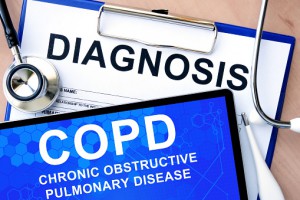 Surely you have heard the saying, “too much of a good thing can become a bad thing.” The same applies to vitamin supplements, as taking an excess of vitamins can be harmful to your health. This may seem contradictory because vitamins are often encouraged to supplement nutrients that may be lacking in our diets. Physicians or nutritionists may suggest vitamins once it is confirmed that you have a nutrient deficiency and highly advise that the daily recommended doses are followed.
Surely you have heard the saying, “too much of a good thing can become a bad thing.” The same applies to vitamin supplements, as taking an excess of vitamins can be harmful to your health. This may seem contradictory because vitamins are often encouraged to supplement nutrients that may be lacking in our diets. Physicians or nutritionists may suggest vitamins once it is confirmed that you have a nutrient deficiency and highly advise that the daily recommended doses are followed.
The Institute of Medicine has established guidelines such as the RDA (Recommended Dietary Allowance) and DV (Daily Value) to help people understand the daily suggested dose of vitamins.
Vitamin overdose occurs when a person ingests far more than the daily recommendation, for an extended period of time. Although the body can excrete excessive amounts of water-soluble vitamins such as vitamin C, it can retain fat-soluble vitamins such as vitamin A, which can be toxic.
Here are a few vitamins that are proven to be toxic if taken in excess, as well as their symptoms of overdose:
- Iron- Nausea, bloody stools, diarrhea, dizziness, headache, fluid build-up in the lungs and fever.
- Vitamin A-Hair loss, liver damage, severe headaches, bone pain, blurred vision, dry skin and vomiting
- Vitamin D- Abnormal heart rhythm, constipation, frequent urination, muscle weakness and confusion.
- Vitamin E- Interferes with the body’s ability to clot blood, which can be harmful for those on blood thinning medication
- B Vitamins-B6 in excess can cause nerve damage; while B3 can cause jaundice, elevated liver enzyme levels and nausea.
If you have decided to purchase vitamins, always follow the daily recommended dose to avoid excessive intake. Before purchasing it is recommended that you consult a physician or nutritionist to receive an assessment.
All content of this newsletter is intended for general information purposes only and is not intended or implied to be a substitute for professional medical advice, diagnosis or treatment. Please consult a medical professional before adopting any of the suggestions on this page. You must never disregard professional medical advice or delay seeking medical treatment based upon any content of this newsletter. PROMPTLY CONSULT YOUR PHYSICIAN OR CALL 911 IF YOU BELIEVE YOU HAVE A MEDICAL EMERGENCY.

 When we eat a lot of food that is high in carbohydrates, sugars and fats such as pies, yams and buttery mashed potatoes they trigger a neural response in the nervous system, which tells the body to slow down and concentrate on digestion. Also, the more you eat is the more insulin your body releases. Insulin increases serotonin and melatonin, which are the chemicals and hormones associated with feelings of drowsiness and happiness.
When we eat a lot of food that is high in carbohydrates, sugars and fats such as pies, yams and buttery mashed potatoes they trigger a neural response in the nervous system, which tells the body to slow down and concentrate on digestion. Also, the more you eat is the more insulin your body releases. Insulin increases serotonin and melatonin, which are the chemicals and hormones associated with feelings of drowsiness and happiness.






